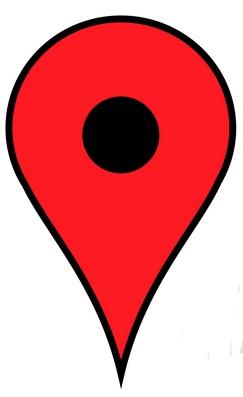Have you ever tuned to your favorite band and started calling CQ, CQ, CQ but no one returned your call? The socialhams.net NCDXF Beacon map will help you to find out if the conditions on your favorite band are allowing you to reach out to the world.
A Little History
In 1979 the Northern California DX Foundation (NCDXF) and Jim Ouimet – K6OJO constructed and deployed the first of many propagation beacons, transmitting from a trailer overlooking Stanford University campus near San Diego, CA USA.
This beacon station operated under the call WB6ZNL/B (/B indicates this was a beacon station) transmitting on 14.1-MHz for a duration of 75 seconds every 15 minutes. Soon other beacon stations teamed with NCDXF to establish a beacon network around the globe. Some of the early stations were located at: the United Nations building, the University. of Helsinki, Tel Aviv University, Honolulu City College, and Radio Club Argentina in Buenos Aries. About that time the existing station at Sanford Univ. acquired the call W6WX/B, which is still in use to this day.
How do these beacons work?
Each beacon in the NCDXF/IARU beacon network transmits every 3 minutes in sequence on 14.100, 18.110, 21.150, 24.930 and 28.200 around the world.
The beacons use a power stepping feature that transmits at 100w, 10w, 1w and 100mw. The transmission of each beacon consists of the following message in CW @ 22wpm:
QST de (call sign) - 100wats
9 second dash - 100w
9 second dash - 10w
9 second dash - 1w
9 second dash - 100mw
SK (call sign) – 100w
By copying the above message you will be able to determine if the band is open or which band offers the best propagation to your preferred location. Then you can start making make those long-range DX contacts!
Note: These beacon stations transmit 100w out of a vertical antenna, so even copying a weak signal may be an indication of good propagation conditions if you are using a high gain or directional antenna.
NCDXF Beacon Map

Now that you understand a little bit about the network and how the beacons operate you can see the Beacon Map can be used like an interactive schedule, showing when the next beacon will transmit. Let’s take a deeper look into this tool.
Many of you have used the Google Map interface, so I will not spend a lot of time explaining these features. There are many of the popular Google map features like Zoom, Map overlay, Topographical overlay or Satellite image overlay. As a bonus you can also use the Google Street View to visually hunt for these beacons by dragging the yellow avatar ![]() onto the map.
onto the map.
The map displays the status of each beacon in the network via a color coded pin layout. The color legend is located along the bottom of the map allowing you to easily determine the status of the beacon, the next band that the beacon will transmit on and when.
If prefer to see additional details about a specific beacon you can click on the pin of your choice, a small text box will appear displaying the following data:
Beacon callsign
DX Entity
Location name
Maidenhead grid square
Latitude and Longitude
Operator’s name
Beacon status (On or Off)
Like many of the other features on socialhams.net the NCDXF Beacon Map is yet another free resource to add to your DX arsenal!
73 - KD0OYR
For more information about the NCDXF/IARU beacon network please visit: www.ncdxf.org

| Level | Beginner |
|
Empty
|


